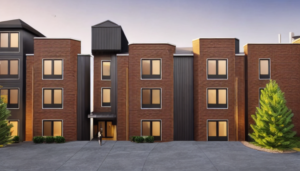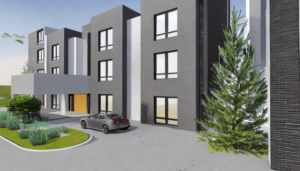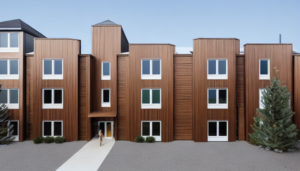How the Architecture Industry is Embracing AI
Like any new technology, Artificial Intelligence (AI) is the subject of discussion, praise and criticism. Regardless of the controversy, practitioners in a wide range of creative fields are discovering new ways to use AI to support their work.
“AI has a wide range of applications in architecture and design, revolutionizing the way professionals in these fields work and create,” says Ariel Aufgang, Principal of Aufgang Architects.
“AI is a very exciting up and coming field with many possibilities in architecture,” says Dan Chadwick, Assistant Project Manager at Aufgang.
“In the current state of AI, I’ve found the most success with using it to iterate upon design ideas. You can provide a prompt with generalized style directions and get some amazing ideas just by re-iterating on an image, or slightly varying your prompt and seeing how the program interprets it. It’s a great place to start and to draw inspiration that can then be incorporated into a design.”
Aufgang Job Captain Milton Lema extensively uses AI in experimenting and refining his designs. He can ask a platform such as ChatGPT to research ideas and with carefully worded prompts, he can generate images of potential building façade designs.
From there, he experiments with variations until he has a plan for what he wants to create in his work. This method is also useful for generating ideas for other projects, such as his entry for a chair design competition. He says “People are worried that jobs will be taken away, but the truth is that AI speeds up the work. The same things were said when computers were first brought into the workplace”.
The design team at Aufgang sees key areas where AI has an impact on architectural design and engineering:
1. Design Assistance:
- AI can help architects and designers explore creative options by allowing them to enter specifications to generate design alternatives. AI can optimize designs for factors like costs, energy efficiency and structural integrity, based on historical design data and user input. This helps make designs more specialized for the client.
- AI tools can use historical design data to generate suggestions for improving and refining designs in areas such as code compliancy. They also enable creative solutions, like architectural elements that adapt dynamically to changing parameters, such as sunlight or occupant needs.
2. Material Selection:
- AI can help designers analyze performance, cost and availability data, and providing options for sustainable and cost-effective materials that complement design aesthetics.
3. 3D Modeling and Visualization:
-
- AI-powered software can speed up the process of creating 3D models from 2D drawings or photographs.



4. Energy Efficiency and Sustainability:
- AI can simulate weather and other environmental conditions to assess the effects on building design and can also analyze building performance data such as energy usage, providing suggestions for reducing environmental impact.
5. Safety and Compliance:
- AI can assist in verifying that designs meet safety regulations and building codes, reducing the risk of design errors.
6. Site Analysis:
- AI can analyze geographic and environmental data such as terrain, climate and local regulations to facilitate site selection and design decisions.
7. Project Management:
- AI-driven software can speed up tasks like scheduling, budgeting and resource allocation, and can help identify potential project delays or issues with predictive analytics.
8. Collaboration and Communication:
- AI-powered tools can help architects, designers, clients, and contractors collaborate on projects.
9. Augmented Reality (AR) and Mixed Reality (MR):
- New technologies like AR and MR can provide immersive ways for clients to visualize completed designs.
Aufgang advises that architects must be alert regarding AI’s contribution to their work. AI can greatly speed up the creative process, but it’s important not to pass off an AI generated image as one’s own.
Aufgang’s Dan Chadwick is optimistic about AI use in architecture: “In the future, I can see AI providing full hyper-realistic renderings based on basic building masses, with accurate depictions of the various details that have been modeled. Currently we use it for design inspiration ideas, but we are constantly looking for ways to incorporate it into our workflow. I look forward to every new advance that is to come.”
“AI is continually evolving in these fields, offering architects and designers new tools and capabilities. However, it’s important to use AI responsibly, considering ethical and privacy implications. That will ensure that the technology complements human creativity and expertise rather than replacing it entirely,” says Ariel Aufgang.
